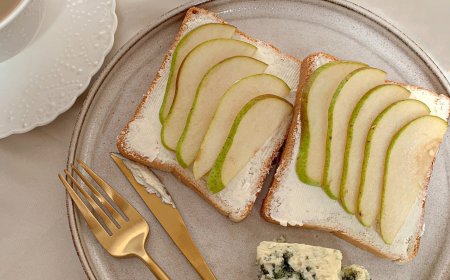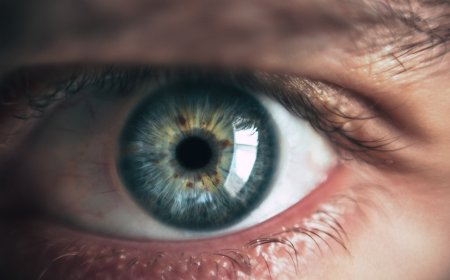Balance between calorie intake and physical activity
Achieving an optimal balance between calorie intake and physical activity is fundamental for maintaining good health, as it contributes to achieving ideal weight, enhancing physical fitness, and promoting overall health.

Achieving an optimal balance between calorie intake and physical activity is fundamental for maintaining good health, as it contributes to achieving ideal weight, enhancing physical fitness, and promoting overall health.
Balance between calorie intake and physical activity
The importance of balancing calories and activity in maintaining health lies in its direct impact on weight, physical fitness, and overall well-being. Keeping calorie intake and expenditure in balance with physical activity levels maintains a healthy and optimal weight, reducing the risk of developing many chronic diseases such as diabetes, heart diseases, and high blood pressure. Additionally, balancing calories and activity leads to improved energy levels and overall activity, enhancing feelings of well-being and happiness. Therefore, individuals should pay special attention to achieving this balance by consuming balanced meals and engaging in regular physical activity, contributing to supporting a healthy and sustainable lifestyle in the long term.
Attaining an ideal balance between calories and physical activity
Achieving an ideal balance between calories and physical activity requires adopting multiple steps and embracing sustainable healthy habits. Firstly, individuals should understand their body's calorie needs based on age, gender, weight, and level of physical activity. Then, it's recommended to consume balanced meals containing appropriate amounts of fruits, vegetables, healthy proteins, and reasonable carbohydrates, while reducing intake of saturated fats and added sugars.
Regarding physical activity, individuals should engage in regular and balanced exercise, tailored to their physical abilities and health goals. Different types of exercises such as brisk walking, cycling, swimming, strength training, and flexibility exercises can be incorporated into the daily routine.
It's also important to maintain balance between calorie intake and expenditure by monitoring portion sizes and nutritional composition of meals and snacks, while not exceeding the recommended daily calorie limit. Smartphone apps or journals can be used to track food intake and physical activity to help individuals achieve a healthy balance.
The importance of rest and good sleep should not be overlooked either, as sufficient sleep contributes to improving metabolism and maintaining physical and mental energy for effective physical activity.
The impact of balancing calories and activity on weight and physical fitness
The balance between calories and activity plays a crucial role in determining weight and enhancing physical fitness. When an optimal balance is achieved between calorie intake and expenditure, ideal and stable weight is attained. For instance, if calorie intake exceeds the body's daily requirements, the surplus will be stored as fat, leading to weight gain. On the other hand, if calorie intake is less than the requirements, the body will begin to burn stored fat to provide energy, resulting in weight loss.
By engaging in regular physical activity, physical fitness is enhanced, and the body's ability to tolerate daily activities and exercise is increased. When physical exercises are integrated with calorie balance, there is a positive mutual effect on weight and physical fitness. Physical activity contributes to increased calorie burning, thus aiding in weight control, while also improving strength, flexibility, and endurance, leading to an enhancement in overall physical fitness and health.
Additionally, achieving an ideal balance between calories and activity reduces the risk of developing many chronic diseases associated with excess weight such as heart diseases, diabetes, and high blood pressure. Therefore, investing in achieving balance between calories and activity is considered a necessary investment in health and general well-being.
Effective strategies to achieve balance between calories and activity
Achieving balance between calories and activity requires following effective and thoughtful strategies to achieve health goals.
1. Determine daily nutritional needs: Before starting any diet or exercise program, individual daily nutritional needs should be determined based on age, gender, weight, and level of physical activity.
2. Meal planning: Planning daily meals and focusing on consuming balanced meals is important for achieving balance. Meals should include a variety of proteins, healthy carbohydrates, good fats, and fiber.
3. Portion control: Monitoring portion sizes to avoid consuming excessive amounts of food that may increase daily calorie intake.
4. Control snacking: Choose healthy snacks such as fruits, vegetables, and nuts instead of snacks rich in sugars and saturated fats.
5. Regular exercise: Regular exercise should be practiced under the supervision of a trainer or fitness expert, focusing on combining cardiovascular exercises like brisk walking or cycling with strength and flexibility exercises such as weight lifting.
6. Track progress: Food diaries and exercise logs can be used to track progress and ensure individual commitment to health goals.
7. Maintain mental balance: Focus should also be on mental health, including getting an adequate amount of sleep and managing stress and pressures properly.
The impact of proper balance between calories and activity on cardiovascular health
Balancing calories and activity plays a crucial role in maintaining heart and vascular health, as it directly affects risk factors associated with cardiovascular diseases. When the proper balance between calories and physical activity is achieved, it can have a significant positive impact on heart and vascular health through several mechanisms.
1. Improving cholesterol levels: Balancing calories and activity can help improve the balance of cholesterol in the blood, as physical activity increases levels of good cholesterol (HDL) and reduces levels of harmful cholesterol (LDL), thus reducing the risk of artery hardening and heart diseases.
2. Improving blood pressure: Regular physical activity helps improve blood pressure, reducing high blood pressure and enhancing blood circulation, thus reducing the risk of heart diseases and strokes.
3. Reducing inflammation: Physical activity can reduce body inflammation, which is a significant factor in the development of cardiovascular diseases, including angina and atherosclerosis.
4. Enhancing heart and vascular functions: Regular physical activity strengthens the heart muscle and enhances vascular function, increasing the body's ability to tolerate physical exertion and reducing the risk of heart diseases.
Furthermore, achieving balance between calories and activity contributes to weight control, thus reducing the likelihood of obesity-related conditions such as high blood pressure, cholesterol, and diabetes. Therefore, investing in achieving balance between calories and activity is a crucial step in maintaining heart and vascular health and reducing the risks of chronic diseases associated with them.
Maintaining a sustainable balance between calories and activity in daily life
Achieving sustainable balance between calories and activity in daily life requires adopting several steps and lifestyle changes.
1. Meal planning: Pre-planning daily meals, focusing on including a variety of healthy foods containing proteins, carbohydrates, healthy fats, and fibers, helps maintain balance in calorie intake.
2. Portion control: Monitoring portion sizes to avoid consuming excessive amounts of food that may increase calorie intake.
3. Emphasis on healthy foods: Prefer consuming fresh and natural foods, such as fruits, vegetables, whole grains, and avoiding processed foods high in fats and added sugars.
4. Regular physical activity: Allocating specific time in the day for physical exercises, whether it's going to the gym, walking outdoors, or even exercising at home.
5. Encouraging physical activity in daily life: Increasing physical activity in daily life by choosing stairs over elevators, walking or biking to work, and allocating time for sports activities with friends or family.
6. Monitoring progress and adjusting plans: Regularly monitoring progress, evaluating diet and exercise programs, and making necessary adjustments to ensure the sustainability of balance and achievement of health goals.
7. Maintaining mental balance: Balancing calories and activity should also include attention to mental health, including getting adequate sleep and managing stress and relaxation regularly.
As integrated habits, these steps can help achieve sustainable balance between calories and activity in daily life, promoting overall health and well-being.
Directing attention towards achieving optimal balance
Directing attention to achieving an optimal balance between calories and activity in children and youth is vital to ensure healthy and sound growth and development. Here are some points that highlight the importance of this balance:
1. Body Growth and Brain Development: During childhood and adolescence, the body is in a critical stage of development. Balancing calories and activity helps provide the necessary energy for this growth and improves brain and body functions.
2. Maintaining Healthy Weight: Balancing calories and activity helps maintain a healthy weight for children and youth, reducing the risk of obesity and associated chronic diseases such as diabetes and high blood pressure.
3. Promoting Physical Fitness: Regular physical activity enhances muscle strength, flexibility, and endurance in children and youth, contributing to improved physical fitness and overall health.
4. Developing Healthy Eating Habits: Focusing on achieving an optimal balance between calories and activity helps develop healthy eating habits in children and youth, promoting a healthy and sustainable lifestyle in the long term.
5. Impact on Emotional and Social Growth: Achieving balance between calories and activity contributes to enhancing emotional and social growth in children and youth. Physical activity releases hormones such as endorphins that help improve mood and reduce stress levels.
6. Reducing the Risk of Chronic Diseases: Balancing calories and activity helps reduce the risk of developing chronic diseases such as heart disease, diabetes, and high blood pressure, which can begin to appear in the youth years if nutrition and physical activity are not adequately addressed.
Summary
Caloric balance and physical activity are essential for good health and sustainable living. This involves striving to achieve an optimal balance between the amount of calories consumed from food and the energy expended through physical activity. When this balance is achieved properly, it can lead to maintaining a healthy weight and enhancing overall fitness and general health. By consuming balanced meals with a healthy nutritional composition and engaging in regular physical activity, individuals can achieve the balance between calories and activity and enjoy a healthy and active life.
Sources
1. Understanding Calories - From Mayo Clinic website: This article provides an overview of calories and how to balance them with physical activity.
2. Physical Activity and Weight Control - From Centers for Disease Control and Prevention (CDC) website: This site explains how to use physical activity to help control weight.
3.Calories Burned in 30 Minutes for People of Different Weights - From Harvard Health Publishing website: This article presents a table showing the number of calories people of different weights can burn during thirty minutes of physical activity.
What's Your Reaction?


























































































